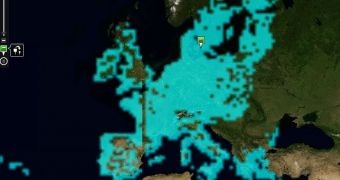The evolution of an environmental project, built through a partnership between Microsoft and European Environment Agency (EEA), now brigs users across the European Union information on not just water quality, but also air quality across the continent. First introduced in mid-2008, Eye on Earth was then a Cloud-based application designed to provide bathing water data, based on the monitoring of no less than 27 European countries. At that time, the Redmond company and EEA indicated that Eye On Earth’s WaterWatch was just the first step in an ambitious project designed to ultimately create a complete online environmental observatory. Approximately a year later, Eye On Earth evolved with the addition of a new Cloud: AirWatch. Like its water-focused counterpart, AirWatch is designed to offer information on air quality, centralizing measures, and modeling data, as well as input from people in Europe.
Jacqueline McGlade, executive director of EEA indicated that Eye On Earth could be used not only to access information harvested from monitoring spots across Europe, but also to share data. “The Microsoft technology behind Eye On Earth and AirWatch makes environmental information much more accessible. As more people understand what’s happening in their area, more will contribute to solving environmental problems," McGlade revealed.
At the same time, the evolution of Eye On Earth is not limited to the addition of AirWatch. The Cloud project has long moved from Virtual Earth to Bing Maps, but it now embraced additional technology from Microsoft. Specifically, Eye On Earth currently runs on top of the Windows Azure platform, which means that it leverages both the Windows Azure operating system and SQL Azure database. Users already familiar with Eye On Earth will notice that the newly launched version features an overhauled graphical user interface, which simplifies navigation and tasks associated with accessing water and air quality information.
"Addressing environmental change requires a comprehensive and global response," noted Rob Bernard, chief environment strategist at Microsoft. "As a technology industry leader, Microsoft is committed to creating solutions for environmental sustainability and fostering connections between governments and citizens by applying leading-edge technology to help people visualise the impact of environmental challenges. Our partnership with the EEA is a powerful example of different organisations — public and private sector — combining their separate areas of expertise towards a shared challenge."
And it’s a fact that Eye On Earth is not yet done when it comes down to its development. For the next stage, Microsoft and EEA will deliver the Cloud app localized in 24 European languages, over the course of the coming weeks. The promise is that additional environmental information will continue to be added to Eye On Earth as the portal will evolve further.
"It’s good to see continued innovation and a commitment to interoperability through cross-browser support from the EEA," said James Governor, RedMonk industry analyst. "SMS support dramatically lowers barriers to access for environmental quality information for 500 million citizens."

 14 DAY TRIAL //
14 DAY TRIAL //